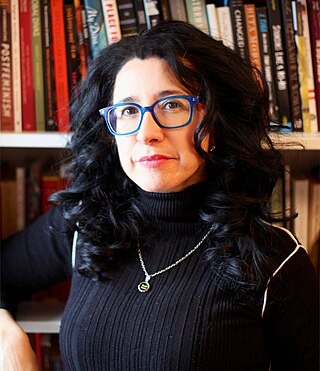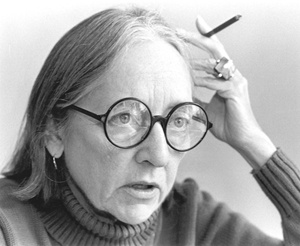
In Aztec religion, Coyolxāuhqui is a daughter of the priestess Cōātlīcue. She was the leader of her brothers, the Centzon Huitznahua. She led her brothers in an attack against their mother, Cōātlīcue, when they learned she was pregnant, convinced she dishonored them all. The attack is thwarted by Coyolxāuhqui's other brother, Huitzilopochtli, the national deity of the Mexicas.

Eva Jacqueline Longoria Bastón is an American actress, producer, director and business woman. After a number of guest roles on several television series, she was recognized for her portrayal of Isabella Braña on the CBS daytime soap opera The Young and the Restless, on which she starred from 2001 to 2003. She is most known for her role as Gabrielle Solis on the ABC television series Desperate Housewives, which ran from 2004 to 2012, and for which she received a Golden Globe nomination and won two Screen Actors Guild Awards with the cast.
The El Paso Times is the newspaper for the US city of El Paso, Texas. The paper is the only English-language daily in El Paso, but often competes with the Spanish-language El Diario de El Paso, an offshoot of El Diario de Juárez which is published across the Rio Grande in Ciudad Juárez, Mexico.

Norma Elia Cantú is a Chicana postmodernist writer and the Murchison Professor in the Humanities at Trinity University in San Antonio, Texas.

El Tiradito is a shrine and popular local spot located at 420 South Main Avenue in the Old Barrio area of Downtown Tucson, Arizona. Because of the site's association with pleas for supernatural intervention, it is also called the Wishing Shrine. The legends surrounding the site center around a broken-hearted man dying and, due to a sin, being unable to be buried on consecrated ground. The legends date to the 1870s, and the shrine has been present since at least 1891. Its name comes from the Spanish "tirar." The shrine was the first Arizona property to be placed on the National Register of Historic Places for its traditional cultural values. It is especially important to Tucson's Mexican and Mexican American communities.
Frederick Luis Aldama is an American author, editor, and academic. He is the Jacob & Frances Sanger Mossiker Chair in the Humanities and founder and director of the Latinx Pop Lab at the University of Texas, Austin. At UT Austin is also affiliate faculty in Latino Media Arts & Studies and LGBTQ Studies. He continues to hold the title Distinguished University Professor as Adjunct Professor at The Ohio State University. He teaches courses on Latinx pop culture, especially focused on the areas of comics, tv, film, animation, and video games in the departments of English and Radio-Television-Film at UT Austin. At the Ohio State University he was Distinguished University Professor, Arts & Humanities Distinguished Professor of English, University Distinguished Scholar, and Alumni Distinguished Teacher as well as recipient of the Rodica C. Botoman Award for Distinguished Teaching and Mentoring and the Susan M. Hartmann Mentoring and Leadership Award. He was also founder and director of the award-winning LASER/Latinx Space for Enrichment Research and founder and co-director of the Humanities & Cognitive Sciences High School Summer Institute. In has been inducted into the National Academy of Teachers, National Cartoonist Society, the Texas Institute of Letters, the Ohio State University's Office of Diversity & Inclusion Hall of Fame, and as board of directors for The Academy of American Poets. He sits on the boards for American Library Association Graphic Novel and Comics Round Table, BreakBread Literacy Project, and Ad Astra Media. He is founder and director of UT Austin's BIPOC POP: Comics, Gaming & Animation Arts Expo & Symposium as well as Founder and Editor-in-Chief of the Latinx Pop Magazine.

Alicia Gaspar de Alba is an American scholar, cultural critic, novelist, and poet whose works include historical novels and scholarly studies on Chicana/o art, culture and sexuality.

Amalia Hernández Navarro was a Mexican ballet choreographer and founder of the world-renowned Ballet Folklórico de México.
Diane Rodriguez was an American theatre artist who directed, wrote and performed. An OBIE Award winning actress, she was known for using comedy to confront various forms of oppression, often with special attention to issues of gender and sexuality.

Borderlands/La Frontera: The New Mestiza is a 1987 semi-autobiographical work by Gloria E. Anzaldúa that examines the Chicano and Latino experience through the lens of issues such as gender, identity, race, and colonialism. Borderlands is considered to be Anzaldúa’s most well-known work and a pioneering piece of Chicana literature.

Deborah Paredez is an American poet, scholar, and cultural critic. She is the author of the poetry collections, Year of the Dog and This Side of Skin, and the critical study, Selenidad: Selena, Latinos, and the Performance of Memory. She is co-founder of CantoMundo, a national organization that supports Latinx poets and poetry. She lives in New York City where she is a professor of creative writing and ethnic studies at Columbia University.

David Tineo is an American artist of Mexican descent whose works focus on cultural and identity issues particular to Mexican Americans who live in the U.S. Though internationally known, most of Tineo's life and career has been spent in Tucson, Arizona. He was diagnosed in 2004 with a macular degeneration that left him legally blind, but continues to paint and sculpt.

The All Souls Procession Weekend is an event in Tucson, Arizona. It draws on Mesoamerican, Spanish Roman Catholic, and Mexican rituals, incorporating many diverse cultural traditions with the common goal of honoring and remembering the deceased.

Judith Chafee nee Davidson Bloom (1932–1998) was an American architect known for her work on residential buildings in Arizona and for being a professor of architecture at the University of Arizona. She was a recipient of the National Endowment of the Arts Fellowship to the American Academy in Rome during the middle of her career and was the first woman from Arizona to be named a Fellow of the American Institute of Architects.
Milta Ortiz is a bilingual, bicultural playwright, poet, and performer.
Virginia Grise is a playwright, and director. Grise's most recognized work is blu, the winner of the 2010 Yale Drama Series Award and a finalist for the Kennedy Center for the Performing Arts' Latino/a Playwrighting Award. In addition, Grise is the co-writer of The Panza Monologues with Irma Mayorga, and edited a volume of Zapatista communiqués called Conversations with Don Durito. She is also a recipient of the Whiting Writers' Award and the Princess Grace Award in Theater Directing.

Emma Pérez is an American author and professor, known for her work in queer Chicana feminist studies.
Patrisia Gonzales is a traditional healer/midwife and professor of Mexican American Studies and American Indian Studies at the University of Arizona. Gonzales is a granddaughter of Kickapoo, Comanche, and Macehual peoples who migrated throughout the present-day United States and Mexico and has taught about the ways in which Indigenous medicine and Western health care can be complementary, both nationally and internationally. She was formerly a Distinguished Community Scholar at UCLA's César E. Chávez Department of Chicana and Chicano Studies and Regent’s Scholar at the University of California, San Diego. Gonzales was selected to teach visitors at the Dunbar Pavilion, an African American Arts and Culture Center in Tucson, Arizona, how to identify and incorporate plants into their health and wellness practices with funding from a Agnese Haury Program of Environment and Social Justice grant.

Daniel Nugent (1954-1997) was an American anthropologist and professor at the University of Arizona. His most notable works include Everyday Forms of State Formation, a co-edited collection of essays about state formation in modern Mexico and Rural Revolt in Mexico: U.S. Intervention and the Domain of Subaltern Politics, an edited collection of essays about subaltern politics in Mexico. Nugent was also a playwright, and he co-wrote the play 13 Days/Los Trece Dias: The Zapista Uprising in Chiapas which toured nationally from 1996 to 1997. He died in Tucson at the age of 43.
Irene Peréz is a muralist known for her membership in the Latina muralist group, Las Mujeres Muralistas and her contributions to the group mural Maestrapeace, at the Woman's Building in San Francisco, California.













